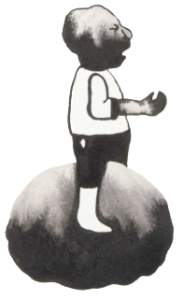A discussion of the judgment of the European Court of Human Rights dated 14 June 2006 (no. 71111/01, Hachette/France)

In 1998 the French magazine Paris-Match published a photograph of the murdered prefect Claude Erignac. The French court ordered the magazine to publish a corrective statement. The European Court of Human Rights (the “Court”) deems this order not to be in violation of the freedom of expression, and thus gives a remarkable signal to the media.
Facts
On 19 February 1998 Paris-Match published an article on the murder of the Corsican prefect Claude Erignac entitled “La République assassinée”. The article was illustrated by a photograph of the murdered prefect, with the following caption: “Sur ce trottoir d’Ajaccio, vendredi 6 février à 21 h 15, Claude Erignac, préfet de Corse, a écrit de son sang une page tragique de notre histoire.” (On this Ajaccio pavement, on Friday 6 February at 9.15 p.m., Claude Erignac, Prefect of Corsica, wrote with his blood a tragic page of our history.) Erignac’s relatives went to the French court. The courts ordered the publisher of Paris-Match in all instances to publish a corrective statement. The magazine had to tell its readers that the photograph had been published without the permission of the next of kin, who considered the publication to be an infringement of their right to respect for their private life.
Judgement of the Court
The Court reached the conclusion that the order imposed by the French courts is not in violation of Article 10 of the European Convention on Human Rights (ECHR), which article protects the freedom of expression. According to this article, interference with the freedom of expression is only allowed if it is provided by law, if it protects a legitimate aim and if it is necessary in a democratic society. The first two requirements are rather easily met. The order is based on a provision in French law and was intended to protect the private life of others.
The Court also reached the conclusion that the interference was necessary in a democratic society. In view of the violent – and for the relatives traumatic – circumstances of the murder, Paris-Match should have exercised restraint in publishing the photograph. The relatives had furthermore indicated that they opposed the publication of the photograph. In the Court’s view, the result of the publication, in a magazine with a very high circulation, has been to heighten the trauma felt by the victim’s relatives and has infringed their right to respect for their private life.
The Court considered the statement imposed and the dissuasive effect it has to be acceptable. The French courts opted for the least far-reaching sanction and have not ordered, for instance, the seizure of all available copies of the magazine, as the relatives had claimed. The French courts have also sufficiently tried to respect the editorial freedom of Paris-Match, which is characterized by the policy of illustrating stories with striking photographs. The Court also observed that Paris-Match has not proven how the order has had a dissuasive effect on its freedom of expression.
Objections
In some respects, the reasoning of the Court is remarkable and in my view the conclusion implies a too far-reaching interference with the media. Two of the seven judges of the Court, the Croatian judge Vajic and the Cypriot judge Loucaides, have also clearly indicated in “dissenting opinions” that they do not agree with the opinion of the majority.
The murder of a politician is very important news. The present murder took place against the background of the bloody battle of Corsican separatists. The media should have great freedom to inform the public about such matters. The Court, however, barely discussed this issue and was mainly focused on the interest of the relatives not to be confronted with the murder in a painful manner. Judge Loucaides rightly observed that the trauma was primarily caused by the murder itself and not by the publication of the photograph. In this situation the right of the public to receive information and the right of the media to provide information should not have to give way to the interest of the relatives.
According to established case law of the Court, public persons must accept more from the media than ordinary people. In the opinion of Loucaides, the relatives of public figures must also be prepared for the consequences of the “mediatisation” of public figures. This does not so much apply to publications of private situations without any public interest, for instance photographs of the day-to-day life of Caroline of Hannover, or of Prince Willem Alexander and his family on holiday. It appears from the Caroline-of-Hannover judgment that great weight must be attached to the private life of the persons concerned and the same will be true for their relatives. In case of historic, world-shattering events, public figures as well as their relatives must accept the corresponding media attention to a far-reaching extent, even if they find this attention painful.
The Court did not rule that Paris-Match was not allowed to publish anything about this matter, but it imposed considerable restraints on the manner of publication, in connection with the feelings of the relatives. This choice is comparable to the much-heard argument: “But is it really necessary to publish in such a confronting manner?” The boundaries of the freedom of expression do not determine, however, which manner of publication is desirable or necessary, but what is allowed. In earlier judgments the Court often confirmed that the freedom of expression is also meant for – and is especially important to – opinions and information that will “shock, offend and disturb”. This should not only apply to the contents of the message, but also to the manner of presentation, since this is also of great importance to the communication of the message. The media must be able to inform the public about what exactly happened and must be free to choose between word and image. The photograph in Paris-Match is not more shocking than reality, as judge Vajic observed, and does not magnify reality. The photograph did not show Erignac’s full face, nor his wounds.
The Court did not deem the imposed obligation to publish a corrective statement to be unnecessarily dissuasive and ruled that Paris-Match has not shown in which manner it had actually had a dissuasive effect for Paris-Match. In my opinion, the Court should not have required such proof, because it is difficult for the media to proof what they have refrained from as a consequence of an earlier sanction. Both Loucaides and Vajic rightly observe that by its nature such an order is dissuasive. A corrective statement suggests that the publication was unlawful and, for this reason alone, it is undesirable. The media will tend to make more reticent choices when publishing about important events if they will too quickly be ordered to publish corrective statements at the request of the offended survivors. The judgment of the Court has a chilling effect on the news media.
Conclusion
In this judgment the Court gives a signal that the media must watch their steps if they want to inform the public about important events, even if they completely truthfully report on the raw reality.

